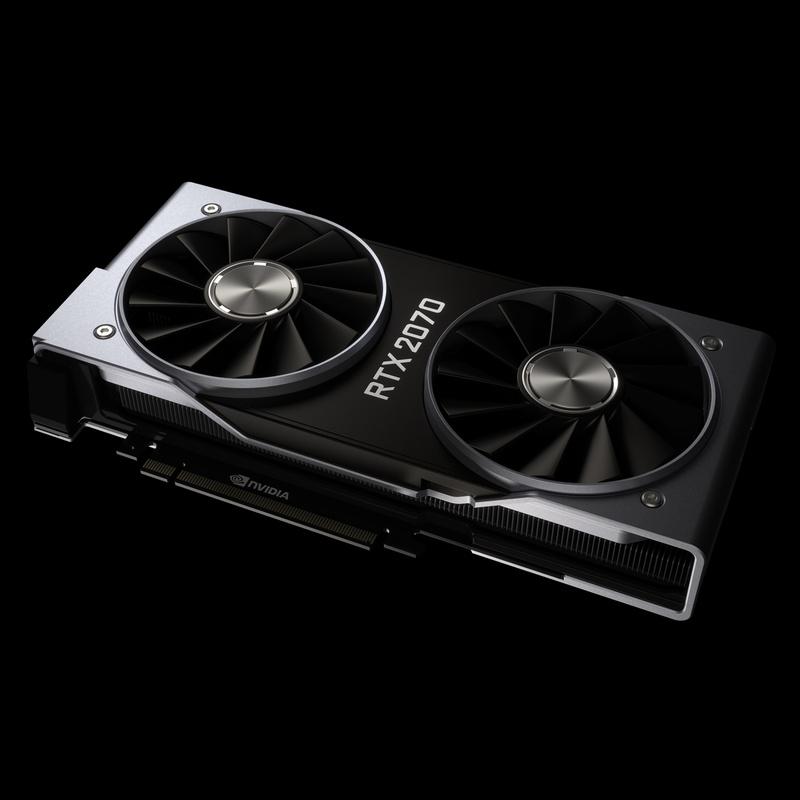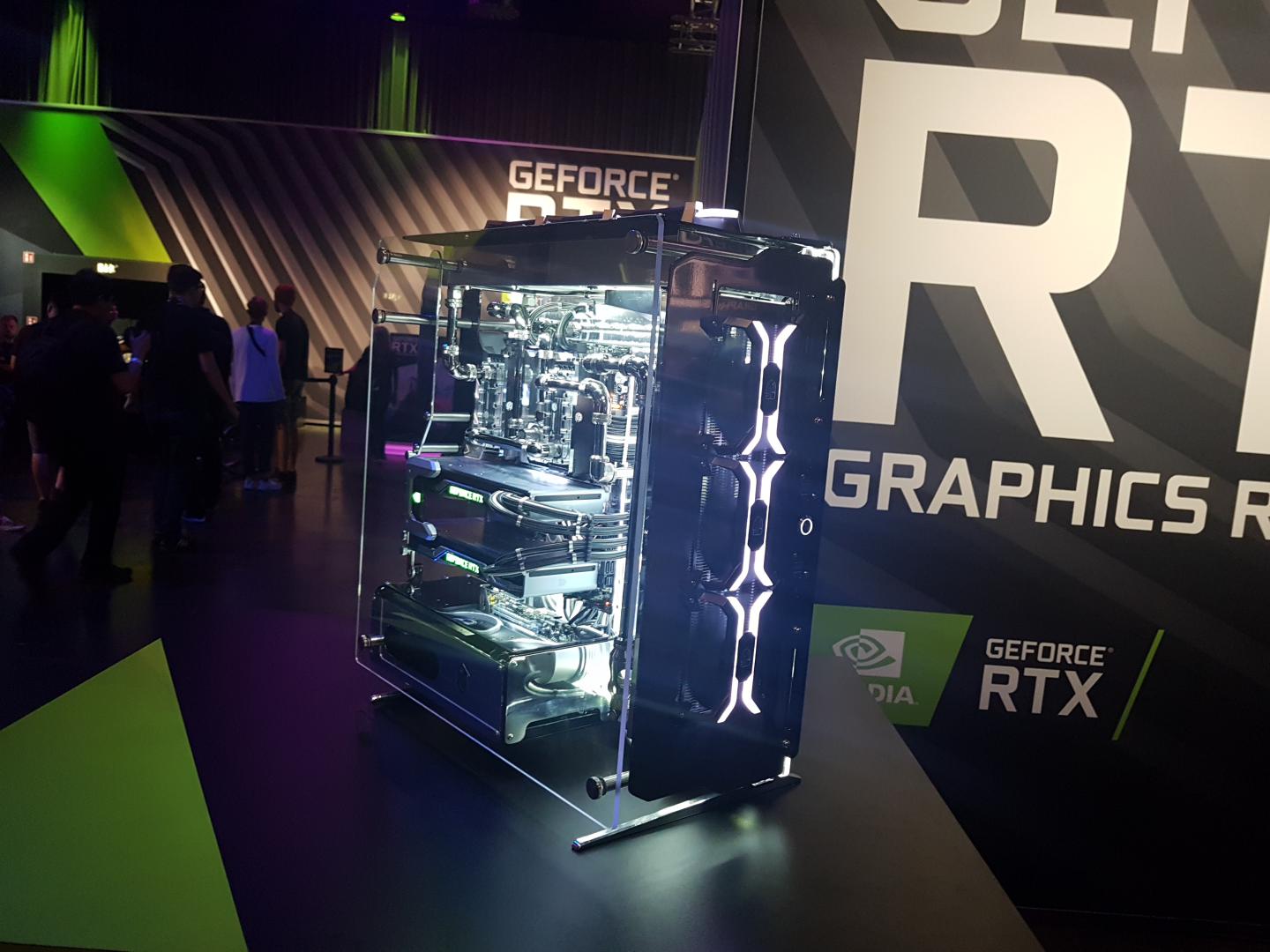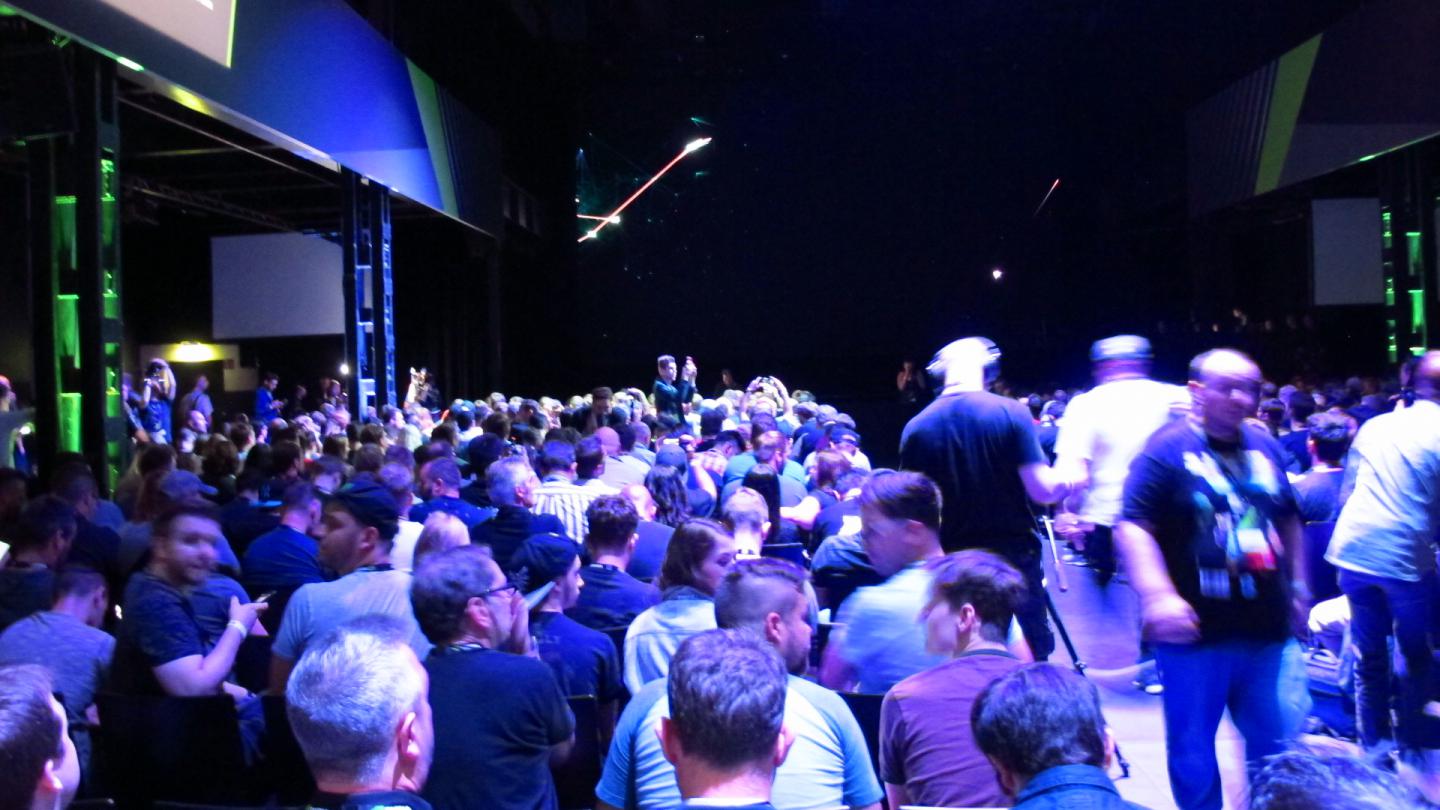It has been a long time coming, moments ago NVIDIA has announced the GeForce RTX 2070, 2080 and 2080 Ti. During it's Gamescom 2018 event the CEO of Nvidia took the stage and announced the two Turing processor-based products.
As everybody has been able to see, prior to the weekend the web exploded exposing the two cards announced already. In our preview from last week, you've been able to read up fairly accurate of what to expect. Last week at Siggraph NVIDIA launched the TU102 processor already, pretty much disclosing the bigger part of the new architecture. Shortly followed by that was a crazy amount of artwork (box and card) leaks as well as some technical documentation. The wait, however, is over and we can finally lift the curtain with more precise details about the boards, its prices and availability.
What is NVIDIA announcing today?
Nvidia will announce three GeForce RTX cards today, the 2070, 2080 and 2080 Ti. Each card will get two SKUs, a reference founders edition and a secondary version for the AIB board partners. The board partner cards will be clocked a notch faster. We still need to update the chart to reflect that. Cards will be available starting September 20th. For AIB card, have peek here as we took some photos at the NVIDIA event.
GeForce RTX 2070
NVIDIA also is announcing the 499 USD - 2070. This 185 Watt car will have 2305 shader procs.Is has a 1410 MHz base clock and a 1620 MHz boost clock for the standard founders version. The card has 8GB of GDDR6 memory running a 256-bit wide bus (448 GB/s), the price is 499 USD and 599 for the founders version. We'll add more detail once it comes in.
GeForce RTX 2080
You will see two products launched in the first launch wave. The GeForce RTX 2080. This graphics card series will not have the full shader count as the GU102, the card will have 2944 shader processors active based on the GU104 GPU. For clock frequencies please look at the upper table for a good indication. Mind you that these will different here and there, AIB partners obviously have different factory tweaked products. The GDDR6 memory will get tied towards a 256-bit bus, and depend on the clock frequency, we are looking at 448 GB/sec (699 USD).
GeForce RTX 2080 Ti
The flagship is the GeForce RTX 2080 Ti with GU102. Expect 4352 active shader processors, which is substantial, seen from the 1080 Ti. The product will get 11GB GDDR6, With 11 GB you will get a 352-bit wide memory bus as each chip is tied towards a 32-bit memory controller, 11x32 = 352-bit. For clock frequencies again please look at the above table and keep some margin in mind for the board partner clock frequencies (999 USD).
Meet the NVIDIA Turing GU102 GPU
Turing in its fully enabled GPU form will have 4608 shader processors paired with 576 Tensor cores. What’s new however are the addition of RT cores, ray tracing cores. Meaning that NVIDIA now has added core logic to speed up certain ray tracing processes in a bit of a hybrid manner. With raytracing, you basically are mimicking the behavior, looks, and feel of a real-life environment in a computer generated 3D scene. Wood looks like wood fur on animals looks like actual fur, and glass gets refracted as glass etc.
|
| ||||||
|---|---|---|---|---|---|---|
| GeForce | RTX 2080 Ti FE | RTX 2080 Ti | RTX 2080 FE | RTX 2080 | RTX 2070 FE | RTX 2070 |
| GPU | TU102 | TU102 | TU104 | TU104 | TU104 | TU104 |
| Shader cores | 4352 | 4352 | 2944 | 2944 | 2304 | 2304 |
| Base frequency | 1350 MHz | 1350 MHz | 1515 MHz | 1515 MHz | 1410 MHz | 1410 MHz |
| Boost frequency | 1635 MHz | 1545 MHz | 1800 MHz | 1710 MHz | 1710 MHz | 1620 MHz |
| Memory | 11GB GDDR6 | 11GB GDDR6 | 8GB GDDR6 | 8GB GDDR6 | 8GB GDDR6 | 8GB GDDR6 |
| Memory frequency | 14 Gbps | 14 Gbps | 14 Gbps | 14 Gbps | 14 Gbps | 14 Gbps |
| Memory bus | 352-bit | 352-bit | 256-bit | 256-bit | 256-bit | 256-bit |
| Memory bandwidth | 616 GB/s | 616 GB/s | 448 GB/s | 448 GB/s | 448 GB/s | 448 GB/s |
| TDP | 260W | 250W | 225W | 215W | 185W | 175W |
| Power connector | 2x 8-pin | 2x 8-pin | 8+6-pin | 8+6-pin | 8-pin | 8-pin |
| NVLink | Yes | Yes | Yes | Yes | - | - |
| Performance (RTX Ops) | 78T RTX-Ops | 60T RTX-Ops | 45T RTX-Ops | |||
| Performance (RT) | 10 Gigarays/s | 8 Gigarays/s | 6 Gigarays/s | |||
| Max Therm degree C | 89 | 88 | 89 | |||
| Price | $ 1199 |
$ 999 | $ 799 |
$ 699 | $ 599 |
$ 499 |
The big Turing will be the TU102 (and yes there is a TU104 as well). That TU102 will, of course, end up in the biggest part, the RTX 2080 Ti. That GPU is rather big and counts 18.6 billion transistors localized onto a 754mm2 die. In comparison, Pascal had close to 12 billion transistors on a die size of 471mm2. Gamers will immediately look at the shader processors, the Quadro RTX 8000 has 4608 of them enabled and since everything with bits is in multitudes of eight and while looking at the GPU die photos. Turing has 72 SMs (streaming multiprocessors) each holding 64 cores = 4608 Shader processors. We have yet to learn what blocks are used for what purpose. A fully enabled GPU has 576 Tensor cores (but we're not sure if these are enabled on the consumer gaming GPUs just yet), 36 Geometry units, and 96 ROP units. We expect this GPU to be fabbed on an optimized 12nm TSMC FinFET+ node, the frequencies at this time are unannounced. Again, this is a fully enabled Turing TU102, the cut-down versions will end up in the RTX 2080 series, but we'll talk about that in a minute.
Graphics memory - GDDR6
Another step in the new technology is of course graphics memory. HBM2 is a bust for consumer products, at least it seems and feels that way. The graphics industry at this time is clearly favoring the new GDDR6. It’s easier and cheaper to fab and add, and at this time can even exceed HBM2 in performance. Turing will be paired with 14 Gbps GDDR6. The Quadro cards have multitudes of eight (16/32/48GB) ergo we expect the GeForce RTX 2080 to get 8GB of graphics memory. It could 16GB but that just doesn’t make much sense at this time in relation to cost versus benefits. By the way, DRAM manufacturers expect to reach 18 Gbps and faster with GDDR6. We'll talk about the clock frequencies a bit below.
NVLINK
So is SLI back? Well, SLI has never been gone. But it got limited towards two cards over the years, and driver optimization wise, things have not been optimal. If you have seen the leaked PCB shots, you will have noticed a new sort of SLI finger, that is actually an NVLINK interface, and it's hot stuff. In theory, you can combine two or more graphics cards, and the brilliance is that the GPUs can share and use each others memory, e.g direct memory access between cards. As to what extent this will work out for gaming, we'll have the learn just yet. Also, we cannot wait to hear what the NVLINK bridges are going to cost, of course. But if you look at the upper block-diagram, that a 100 GB/sec interface, which is huge in terms of interconnects. We can't compare it 1:1 like that, but SLI or SLI HB passed 1 or 2 GB/sec respectively. One PCIe Gen 3 single lane offer 1 Gb/s, that's 16 GB/sec or 32 GB/sec full duplex. So that one NVLINK between two cards is easily three times faster than a bi-directional PCIe Gen 3 x16 slot. NVIDIA will support 2-way NVLINK support on selected cards, The RTX 2070 lacks that option. The bridge to connect two cards is sold separately by Nvidia for € 79.
Battlefield V will be launched with RTX Raytracing support
Below some photos from the Gamescom 2018 event. For now, this is it live from the event. We'll add more once information and artwork arrives.
























